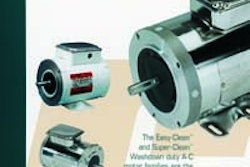
Putting more eggs into fewer suppliers’ baskets continues to be a trend. But some major manufacturers are now questioning whether they hear about all the innovations in packaging. This was the conclusion from comments by participants in a roundtable discussion held last year by Boxboard Containers Intl. with the assistance of Packaging World.
The members talking about vendor consolidation and partnering include: Debbie Putnam and Janette Kirksey, both packaging buyers with Ross Products, Columbus, OH; Andrew Kerr, packaging technician at Eastman Kodak, Rochester, NY; Paula Record, packaging development manager with Unilever, Chicago, IL; and Leo Mankovich, senior packaging engineer with Anheuser-Busch, St. Louis, MO.
Mankovich said that his company has definitely noticed a trend toward vendor consolidation. “Recently, one of our larger suppliers merged with another one,” he reported. “Our message to corrugated suppliers: We continue to expect new and improved package designs.
“Right now, I don’t see a lot of competition. We don’t have people knocking on our doors every week like it used to be several years ago.” Unilever’s Record agreed. “Five years ago, I had a lot more people calling on me. When there was more competition, there was more innovation,” she said.
Consolidation is certainly the trend for Ross Products. “We are doing more partnering,” Kirksey stated. “We are making our vendors an extension of our purchasing department and consolidating our vendor base.
“Vendors also suggest cost-saving ideas. That’s why we go from the ground up with them. When their product comes in, we talk to them about how we can do things differently, how we can improve our specs. We’ll ask them: ‘Is there anything that our specs are telling you to do that could be done better?’” she noted.
With consolidation, your costs should be going down, not up, Kirksey said. “I don’t think you can partner with just any supplier. You have to have a ‘history’ with them.”
Although Kodak’s Kerr doesn’t have direct buying responsibilities, he works closely with the purchasing department. “In early ’99, we consolidated our corrugated vendor base down to two suppliers,” Kerr stated. “At that time, our buyer set up purchasing agreements that limited our exposure to higher prices.”
While most participants said their companies had been experiencing higher prices for packaging, especially for corrugated, most said it’s just part of the supply-and-demand cycle.
“The result of all of this [merger and acquisition] activity is that many mills are being closed temporarily, retired permanently or pulled off-line for updates and modernizing,” Kerr added. “Now with that capacity coming off-line, the supply is getting tighter and prices are rising.”
Putnam of Ross Products agreed. “Within the last year I’ve seen probably the best attempt throughout the industry to control the flow of material from the mill,” she pointed out. “I think they need to keep that discipline.”
Pros & cons of partnering
Just because a company “partners” with another doesn’t mean you don’t need to stay abreast of what’s going on in the industry, Kirksey emphasized. “You have to keep lines of communication open by asking, ‘Okay, this is a new technology. What do you know about this? Is this a capability that you have?’ We let them know what’s out there.”
Putnam added that the best partnerships are with companies that are in strong positions in their fields. “When we are partnering, it’s usually with a company that’s a leader. If a different company comes up with something new, your supplier is going to have an incentive to consider that technology, unless it’s patented,” she noted. “As a buyer, if I have a choice to move into that new technology with a current partner willing to take that path, I would prefer to stay with the partner. You have to rely on your partners to be willing to make or share the capital investment.”
Unilever has contracts where a supplier may get the right of first refusal, Record noted. “But Unilever is a big company, and we are ‘partnering’ with other big companies,” she described. “If you take the big suppliers and you tie them up with other big companies, the push might [seem to] be on technology, but it’s really mostly on speed and cost.
“So our suppliers are going to focus all of their effort on speed and cost,” she predicted. “And they might focus on those areas to the point where they downsize their technical staffs because they are costly [to maintain]. So, I think that partnering may sometimes inhibit the competition for creativity.”
Rating vendors
Anheuser-Busch’s purchasing department has a rating system for vendors, Mankovich reported. “Periodically, they publish rankings of suppliers, whether it be for corrugated, folding cartons, bottles, cans, what have you.”
Unilever has a yearly goal for cost savings. “Each supplier is informed about that goal,” Record said, “and either it comes out of the price on a negotiated basis, or we work together to figure out a better way to achieve the targeted savings.”
“We can chip away at cost savings because savings really need to come from [changing specs] rather than downweighting the corrugated or dropping a color,” Record stated. “We all did those things years ago. Now we really need to start looking at the bigger things that allow for bigger cost savings, like process changes.”
Record was very vocal about concern that large companies are shutting out the smaller, more entrepreneurial companies that are really on the cutting edge and that show new ways of thinking. “As larger companies start partnering with other larger component suppliers, we may be limiting the opportunities for the smaller suppliers,” she worried. “And we have all seen that some little companies can do some fabulous things because they are very nimble and quick and willing to take risks. And the times that we have been willing to take a risk with a company like that, we have really won big.
“So I think there has to be a balance between what we call ‘partnering’ and allowing the smaller companies with cutting-edge innovation to get their ideas to us,” Record concluded.

























